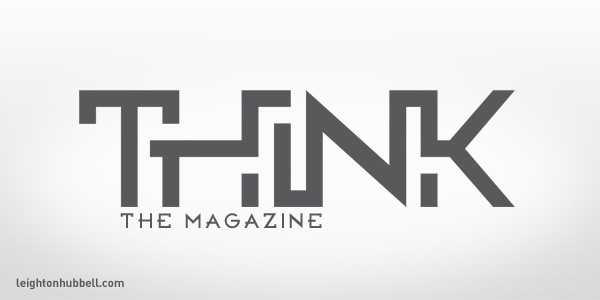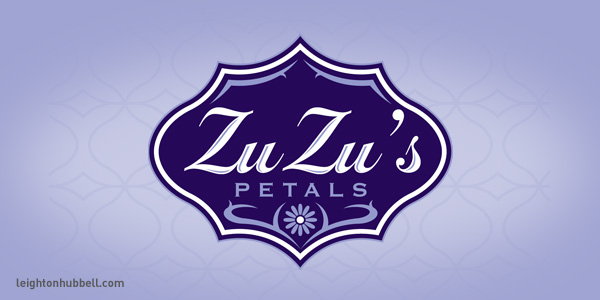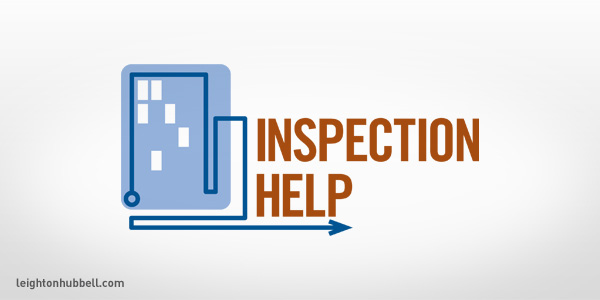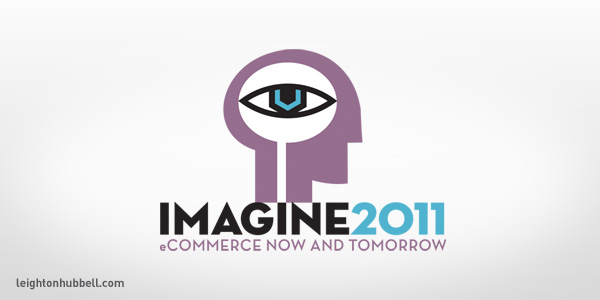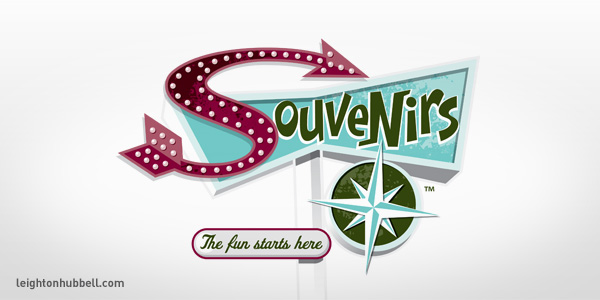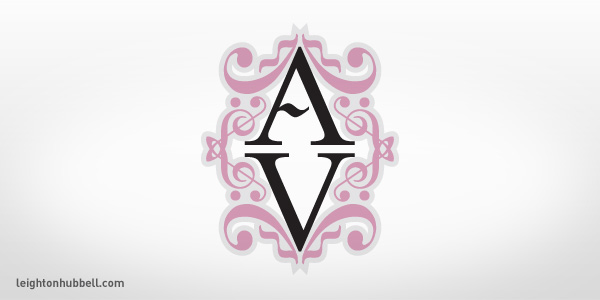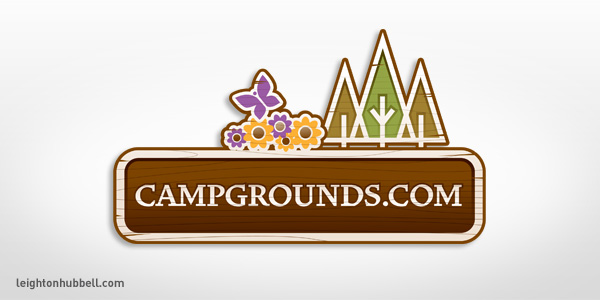Interview with award-winning designer Leighton Hubbell
We have the pleasure to bring you an interview with one of today's most prolific logo designers, an artist who's work has been recognized and featured on over two dozen books on logo design, identity and graphic design. He's been designing logos for more that 20 years, and I'm sure I am not mistaken to say that for many of us, his work has been truly inspirational. Fellow designers, we present you Leighton Hubbell, award-winning logo and graphic designer, who's been kind to take some time out of his busy schedule and share with us a bit about his experience and design work. Enjoy!
Tell us a little bit about yourself, what made you become a logo designer and how did you start your career?
My name is Leighton Hubbell. I'm the guy behind the curtain at the one-man design shop, Leightonhubbell.com and Hubbell Design Works. I've been designing logos, corporate identity systems, promotions, packaging design, illustration, print, web design and television for quite a long time. Throughout my many design and illustration escapades, I've worked with anyone from one-person entrepreneurial companies to major international corporations in a vast range of different categories.
I ended up in logo design kind of by accident. One of the ad agencies I worked for had a very small design group that the company used to contract unique design projects for its clients. I was selected to participate on different jobs with a few of my colleagues. I had done a good handful of logo designs before then, but didn’t realize I might have a knack for it. Working with that group, I was able to put together some pretty nice logos. Only one or two got used, but they were pretty high profile at the time.
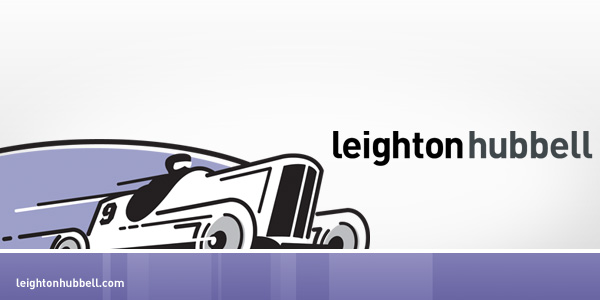
From there, l would get various assignments on my own and would slowly get the opportunity to build my portfolio.
Eventually, my strategy evolved into a more design-based freelance business. As the projects came through, they became larger and more extensive. Getting the logo project would lead to the stationery design, which would lead to collateral design and so on. Several successful launches later, the referrals came in and before you knew it, I became a branding guy.
Where do you find inspiration to create such great logos?
It’s been said, inspiration can come from anywhere. That’s very true. Sometimes, whether you know it or not, it can also come from your own interests, past influences and of course, personal experiences. I have a very diverse range of things I am into and subjects I keep up with and I try to log a lot of that stuff in my sketchbook.
I doodle, draw, paste, tape, glue or affix whatever it is into my sketchbooks. They are a great way to keep track of interesting stuff and have helped me many a time to come up with or try something new. Every time I fill one up, I get another one.
The best way to create interesting logos is to not look at logos, but use design cues and direction from other types of media. Cool labels, folk art – even old books have great potential for influencing interesting logo design. Inspiration is all around you. You just have to know when to look.
Can you describe your logo creation process?
It’s very traditional and structured, and then again sometimes it’s not.
I am a firm believer in collecting lots of information and asking lots of pertinent questions. I’ve also got enough experience now, that a good deal of my process is instinctual because of my experience. After taking in the information that I get from the client, I start to work out some initial ideas in my sketchbook. From there, depending on the level of finish that’s required, I might tighten up the sketches or I might look at typefaces next. It really depends on the project.
Sometimes the mark comes to me right away, and other times it is a more drawn-out and lengthy discovery session.
I know there are many designers that follow a very structured and disciplined procedure for their logo projects. For me, it’s different every time. But, that’s probably why I enjoy it so much, because it’s never boring.
How do you deal with creative blocks?
Some are worse than others. Most of the time, the reason I get a creative block is not getting enough information from the client. Either the product or service is too generic or doesn’t ring true to the unique selling point.
I’m not very good at just producing ‘eye-candy’ type logos. You know, the ones that are all technique, without a lot of concept or substance. For me, it’s way more difficult getting started on a logo with no parameters, than one with many. At least with the parameters, I have somewhere to start.
Other times I just need to step away from the project and let my brain process the problem in the background. Eventually, the ideas will come to me and I can take another crack at it. Going for a hike or a bike ride works well, too.
What do you think makes a great logo?
In my opinion, a great logo has a point of view, is well-designed and creates a visual calling card for the company or service it represents. It also needs to have enough versatility to work in many situations and venues and is visually engaging.
In a broader sense, a good logo can become a great logo when crafted as part of a well-designed and compelling branding design campaign. In fact, it’s often difficult to get a true sense of how good a logo is unless it is viewed in its natural environment.
Some good logos fall short of their potential when the branding is not up to snuff. And some rather ordinary logos can get a breath of new life with great branding. Most people don’t consciously realize that many times, their fondness for a particular logo has more to do with how they feel about the branding, than with the actual logo design. Interesting, eh?
What do you think are your best logos so far and why?
That’s a very difficult question. I like to think that I am improving and evolving my design work each and every day. Some days are better than others.
The handful of logos that I have included in this interview are some of the most recent ones that I am proud of. They range from a corporate magazine to software, and small business to promotional events. There’s even a game wrapped up in there.
What I like to do is always try and expand my range. I’ve been fortunate enough to be involved in a lot of different types of projects and there is always something new to try and solve. It’s what makes my job worth doing. There are many logos that I’ve done over the years that I am proud of, but there is always something new to take on right around the corner. This group are the latest favorites. Who knows what tomorrow will bring?
What other design work do you do besides logo design?
I am very fortunate to have a wide range of creative abilities, and I provide a full range of services including corporate identity, icon design, lettering design, illustration, print and web presence design.
Where can people see your work?
My portfolio site: http://leightonhubbell.com
My studio site: http://hubbelldesignworks.com
My blog: http://leightonhubbell-blog.com
My logo blog: http://leightonhubbell-logos.com
Dribbble: http://dribbble.com/leightonhubbell
The LogoMix: http://www.thelogomix.com/designer/leighton_hubbell
What advice would you give for aspiring logo designers?
Study the masters. Draw. A lot. Get a sketchbook and use it. Be a student of the craft. Work hard and pay your dues. Find yourself some good clients.
And most of all, always, always, always work, improve and refine your portfolio. Take care of it and it will pay you back handsomely.

